July is in the books, and the Cardinals had a winning month. That’s encouraging, but their record, 12-11, was disappointing. A few more July wins, and the Cards would be in better shape in the standings.
The Cardinals won their first game in August, bopping the Twins 7-3 on Sunday. And as they travel into August, the Cards have a “Things To Do” list.
1) Form a receiving line to greet Jack Flaherty and Miles Mikolas as they return from the IL, probably around mid-month. Hopefully there will be no setbacks, and the two righthanders will stay in the rotation for the remainder of the season. Cardinals starting pitchers ranked third in the NL with a 3.44 July ERA.
More innings would be helpful, but I feel compelled to push back on the out-of-control narrative.
For the season the STL rotation matches both the MLB and NL average of 5.1 innings per start.
Over their last 27 games Cards starters have averaged just under 5.3 innings per start, which is comfortably above the NL average over that time.
Could we please try to have some historical perspective here? It’s 2021. Compared to the olden days, or even more recent times, MLB starters don’t go deep into games.
Let’s look at the St. Louis NL pennant winners since 1964.
Average innings per start:
- 1964: 6.5
- 1967: 6.5
- 1968: 6.8
- 1982: 6.2
- 1985: 6.6
- 1987: 6.0
- 2004: 5.8
- 2006: 5.8
- 2011: 6.2
- 2013: 6.0
The 2015 Cardinals — who won 100 games on strong run prevention — averaged 5.8 innings per start.
As recently as 2014, MLB starting pitchers averaged 6.0 innings per start. The rate has decreased every season since then, dropping to 5.4 innings by 2018, and 5.2 IP in 2019. And now that average has settled to a lower 5.1 IP in 2021.
(I excluded the pandemic-shortened 2020 season.)
The point: why are we holding the Cards’ 2021 rotation to average-innings standards that no longer are relevant? Why do so many of the medias look at the 2021 rotation’s average of 5.1 innings per start and declare a state of emergency? Good grief. Only 12 MLB rotations are averaging more innings per start than the Cardinals in 2021.
With Flaherty on the IL, the Cardinals have averaged 5.01 innings per start. So that’s had an impact. An overstated impact, yes. It isn’t a crisis, but it’s been a factor.
As I mentioned earlier, the Cards have turned in an average of 5.28 innings per start since June 28. They’ve been doing better.
But this isn’t 1968, people. It isn’t 1982. It isn’t even 2015.
It’s 2021.
Please adjust your expectations.
Now, let us resume …
2) Get Tyler O’Neill going. After posting a .554 slugging percentage and .880 OPS in the first three months of the season, O’Neill has slugged .347 with a .660 OPS since the start of July.
His slugging percentage since June 11? Try .336.
In his last 19 games and 76 plate appearances, O’Neill has batted .217, slugged .304, struck out in 34% of his plate appearances and produced just two extra-base hits (homers) and four RBI.
O’Neill has been the primary No. 4 hitter since late June; since July 1 the Cardinals rank last in the majors in runs batted in from the cleanup spot. In his 12 plate appearances with runners in scoring position since July 1, O’Neill is 1 for 11 with six strikeouts. O’Neill isn’t getting many chances to hit with RISP, and I’ll discuss that problem in a bit.
3) Nolan Arenado must hit with authority: Arenado had an .513 slugging percentage and .833 OPS during the first three months. But since July 1, the No. 3 hitter is slugging .444 with a .768 OPS.
Through the end of June, Arenado ranked seventh in the NL with 52 RBIs, was second in doubles (24) and tied for 12th with 16 homers.
But Arenado has only three doubles, four homers and a shockingly low RBI count (10) since July 1. Cubs third baseman Patrick Wisdom has as many RBI as Arenado over this time. And the list of NL hitters with more runs batted in than Arenado since July 1 include John Nogowski, Ben Gamel, Ryan McMahon, Brad Miller and Albert Pujols.
Going forward the Cards offense needs an emphatic burst of power and production from their All-Star third baseman. Because even though the Cardinals have improved in batting average, slugging and OPS since July 1, they still rank 14th in the NL and 25th overall in runs scored since the end of June.
4) Dylan Carlson, please get on base more often. The Cards rookie may be getting more comfortable in the leadoff spot; he has a .357 OBP there in his last 12 games. Or maybe DC is reenergized after being worn down a bit during an extremely busy first half. But this is certain: the St. Louis offense won’t click consistently unless Carlson gets on base more consistently.
Among major-league hitters that have at least 100 plate appearances batting first in the lineup this season, Carlson’s .307 OBP ranks 42nd on a list of 49. (Tommy Edman, displaced from the top spot, has a .312 OBP as a leadoff guy.)
Since July 1, Carlson’s leadoff OBP is only .294. That won’t do; the Cardinals are coming up short in the number of opportunities to drive in runs. And we can’t pin that on Paul Goldschmidt, who has a .368 OBP when batting second in the lineup since the beginning of June. And Goldy has been driving in more runs, which in effect reduces the number of at-bats with runners in scoring position for the hitters that are slotted directly behind him.
But this is a problem: since July 1, the team’s No. 3 and No. 4 hitters have the fewest plate appearances with runners in scoring position in the majors. Putting the 3-4 spots together the Cardinals have a combined 36 plate appearances with RISP since the start of July. That’s terrible. And now know of a big reason why Arenado and O’Neill have such low RBI totals when batting third and fourth over the last month.
This season the Cardinals rank 25th in the majors and 14th in the NL with a leadoff OBP of .312. It’s been a glaring issue for most of the season, Perhaps Carlson is ready to plug in his OBP machine.
5) Stay healthy, outfielders: By my count MLB teams acquired 12 outfielders during the run-up to the July 30 trade deadline. And that number would go to 15 if we include utility types that can play some outfield. (Heck, the Atlanta Braves made trades for four outfielders: Joc Pederson, Adam Duvall, Jorge Soler, and Eddie Rosario.)
The Cardinals, however, did not feel the urge to pad their outfield depth. This has been a problem area since spring training, and the front-office stubbornly — and remarkably — refuses to recognize their outfield’s vulnerability and quality of depth.
This is much less of an issue when O’Neill, Harrison Bader and Dylan Carlson are healthy and playing and thriving. But Bader and O’Neill have dealt with injuries on multiple occasions this season. Bader — who is having a fantastic year — has been limited to 46 games. And as we explained earlier, O’Neill has been slumping for a while. Carlson has done well in his rookie season but has experienced ups and downs.
A legitimate fourth outfielder would cushion the blow in the event of an injury to O’Neill, Bader or Carlson. The Cardinals, of course, are delighted with Tommy Edman and are pleased to use him as the de facto fourth outfielder. He’s hitting .234 with a .619 OPS since early June. Otherwise, the front office has utilized Justin Williams, Lars Nootbaar, Jose Rondon, Lane Thomas and Austin Dean to play outfield at various points this season, and that group contributed minimal offense.
But with the St. Louis baseball operation writing off 2021, and having no significant interest in improving the team during the season, all you can do is hope for good baseball health over the final 55 games.
Bader has been spectacular since returning from the IL on July 1. In 24 games Bader has a .341 average, .385 OBP, .591 slug, .976 OPS, seven doubles, five homers and 18 RBIs.
Don’t run into any walls out there, Harry.
The Cardinals can’t afford to lose you.
6) The Bullpen must cool down: Cardinals relievers still have a horrendous walk rate of 13.3 percent, the worst in the majors. (Well, at least John Gant is gone.) And the bullpen ERA for July (5.05) was the team’s worst in a month this season. With many other teams making deals to secure relief help before the trade deadline, the Cardinals went for the low-hanging fruit. Other than Genesis Cabrera, Giovanny Gallegos and Alex Reyes, I don’t know what’s fair to expect of this group. But for the Cardinals to make a long-shot playoff run, they’ll have to prevent fires, and extinguish them when necessary.
7) Don’t play down to your opponent’s level: We went over this Monday. But 20 of STL’s next 23 games will be played against teams that had losing records through Monday. The Cardinals are 32-24 this season against teams under .500. But it hasn’t been as easy for the Cardinals to beat losing teams in recent weeks; they’re 12-14 in their last 26 against teams below .500.
8) Keep your morale up, Cardinals. I imagine it isn’t easy watching the division-rival Brewers and Reds busily make meaningful trades to upgrade their teams before the deadline. The Reds traded for three relievers. The Brewers landed switch-hitting power bat Eduardo Escobar and obtained two more relievers.
The same goes for other NL squads that took bold action in the desire to compete. The Braves acquired Pirates closer Richard Rodriguez and four outfielders. The Mets added pitcher Rich Hill and infielder Javy Baez. The Dodgers traded for future Hall of Fame starter Max Scherzer and All-Star shortstop Trea Turner. The Giants acquired the talented and versatile Kris Bryant. The Padres trade for Pirates second baseman Adam Frazier, Nationals closer Daniel Hudson and added a good fourth outfielder (Jake Marisnick) from the Cubs.
“This sends such a good message to everybody,” Reds outfielder Nicholas Castellanos said. “To the fan base, to the players. We really see that and we appreciate the front office and ownership for that.”
Castellanos was speaking for the Reds, but his words resonate with players on contending teams that were energized and happy after their front offices delivered immediate help and hope.
Hang in there, Cardinals.
Thanks for reading…
–Bernie
Check out Bernie’s sports-talk show on 590-AM The Fan, KFNS. It airs Monday through Thursday from 3-6 p.m. and Friday from 4-6 p.m. You can listen live online and download the Bernie Show podcast at 590thefan.com … the 590 app works great and is available in your preferred app store.
The weekly “Seeing Red” podcast with Bernie and Will Leitch is available at 590thefan.com …
Follow Bernie on Twitter @miklasz
* All stats used here are sourced from FanGraphs, Baseball Reference, Stathead, Bill James Online, Fielding Bible, Baseball Savant and Brooks Baseball Net unless otherwise noted.
For the last 36 years Bernie Miklasz has entertained, enlightened, and connected with generations of St. Louis sports fans.
While best known for his voice as the lead sports columnist at the Post-Dispatch for 26 years, Bernie has also written for The Athletic, Dallas Morning News and Baltimore News American. A 2023 inductee into the Missouri Sports Hall of Fame, Bernie has hosted radio shows in St. Louis, Dallas, Baltimore and Washington D.C.
Bernie, his wife Kirsten and their cats reside in the Skinker-DeBaliviere neighborhood of St. Louis.



